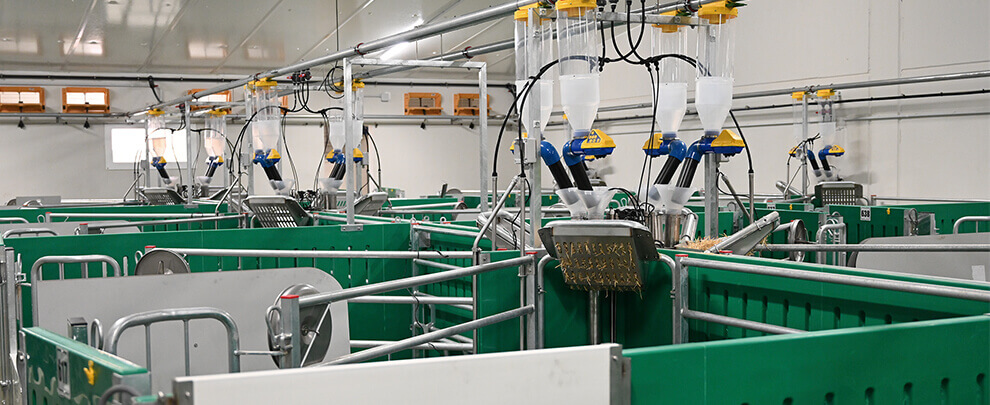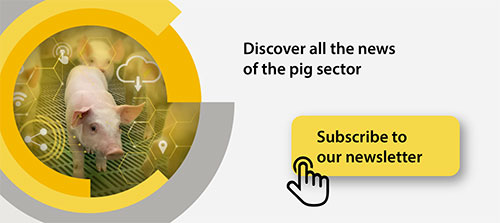Blog
Blog

J. Briñón: "Dositronic M shows us which sows give better production"
28th July 2022 - Success stories
Having facilities that offer the maximum possible welfare for animals is one of Copsio’s main objectives, one of the most important companies in the province of Soria in terms of turnover and one of the most outstanding in pork production nationwide. Under this premise, of offering the best animal welfare, the company has built a new farm in the town of El Portillo de Soria, with a production capacity of 2,763 places, in which Aviporc (Rotecna’s distributor) has participated offering advice and providing the equipment of all the facilities.
THE FARM
The new Copiso facilities have been built with the best conditions of animal welfare, comfort for workers, energy efficiency and respect for the environment in mind. As Javier Briñón, commercial director of Aviporc, explains, “the goal we have set for ourselves has been to put all of our effort and knowledge into building this farm, to obtain the best productive results”.
DOSITRONIC M
The farrowing pens of these new facilities have the Rotecna Dositronic M, an electronic feeding system for sows. Specifically, a total of 660 Dositronic M. have been installed with the solenoid valve to dispense water.
As Paulo Rodrigues, a Copiso technician, explains, “we opted for electronic feeding so as not to depend on manual regulation because with it the attention of the animals on weekends is not reduced, it allows the sows to consume food as many times as necessary, it allows us to obtain real-time information on consumption and makes it possible to save feed”. And he adds: “Specifically, we decided on the Dositronic M because we already have experience with this system, since we have it installed on two other farms, for its s handling simplicity, its robustness and the technical service provided by the installation company”. Briñón adds other reasons why Copiso has opted for the Dositronic M, such as the results obtained in terms of consumption in the other farms of the Soria company with this system and the weight that the piglets reach when weaning.
In addition to the advantages already mentioned, Rodrigues points out that the Dositronic M also facilitates the work of staff on the farm, since the system allows individualized feeding curves to be applied for each animal, which can also be automated. “We work with two curves, one for first-timers and one for multiparous, but when it is necessary, or we want to carry out tests, we have come to work with up to four different curves,” he explains.
Regarding digitized consumption data, Briñón says: “This allows us to have control over feed consumption for each sow and, in this way, we can later assess which sows are giving better production with an optimal feed consumption.” For his part, Rodrigues adds: “Having the complete consumption statistics after weaning allows us to analyse the correlations that exist between the reproductive performance of the sows and their feeding during that phase. In this way, we can adapt the management to obtain the best possible results.”
The farm also has other Rotecna solutions, such as dispensers, panels, feed distribution systems, slats, valves, piglet nests, etc. And, as the commercial director of Aviporc declares, “we have been working with Rotecna for around 30 years, and we maintain a very fruitful relationship thanks to which the two companies have been able to grow, learn, innovate and improve to the level of building farms of these characteristics, unique in the world”.
BIOSECURITY
“Biosecurity in any of our facilities is paramount, and we know that to obtain the best productive results and quality piglets, the health of the farm must be excellent,” says Rodrigues. In this sense, Copiso's facilities have strict external biosecurity measures, both at the feed reception level, materials and, of course, animals, as well as internal for the staff on the farm. Some of these measures are the location of the farm: more than 5 km from any other livestock facility, the installation of a disinfection arch for the entry of vehicles, the entry of consumables to the farm in three different steps, the installation of a corpse incinerator to avoid the entry of a collection truck, etc.








